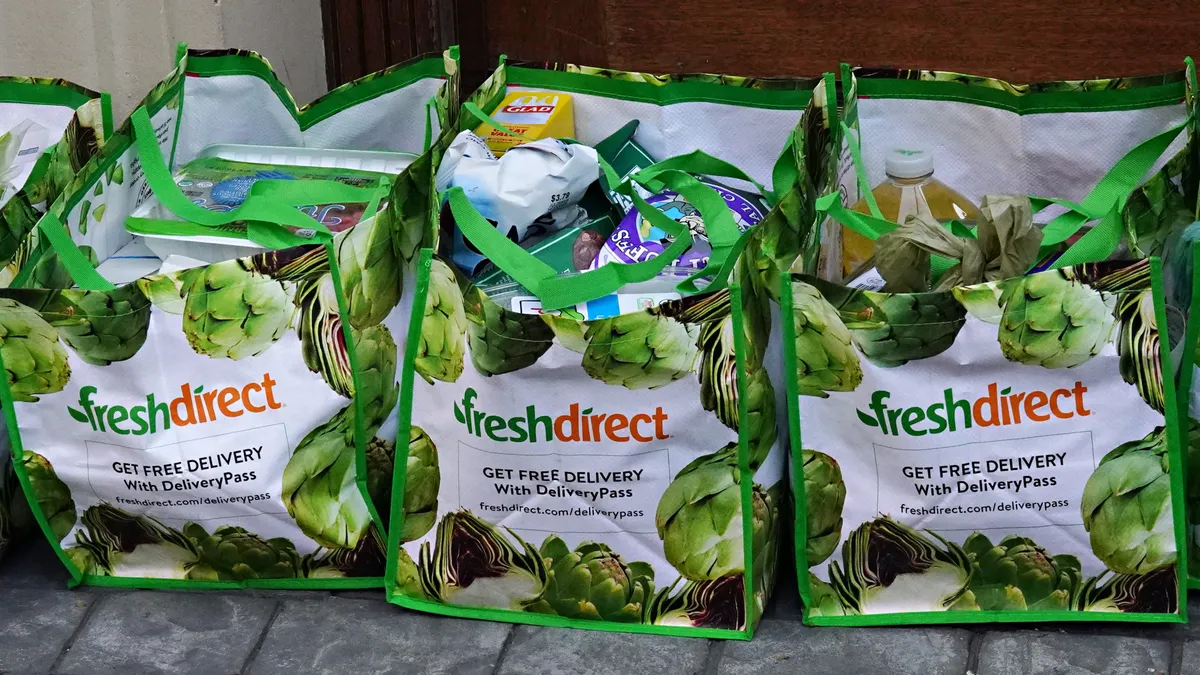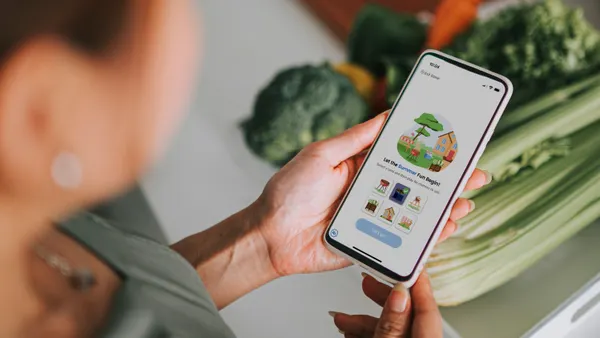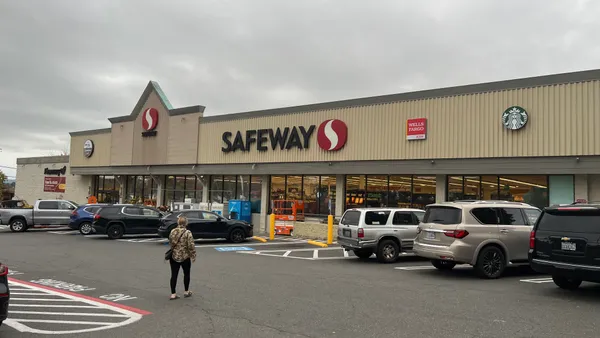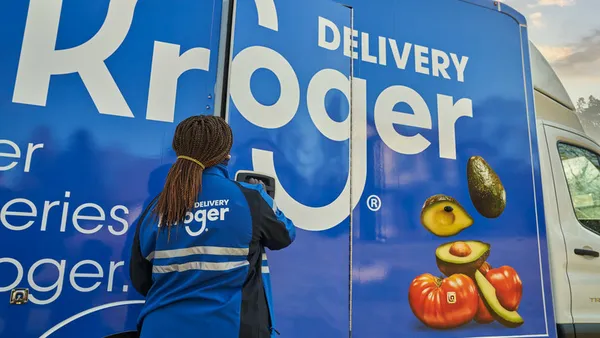Dive Brief:
- Grocery e-commerce sales totaled $7 billion in May, down 16% from a year ago, according to the latest e-commerce report from Brick Meets Click and Mercatus.
- The weighted average order value for the month dipped 7% year-over-year, with delivery and pickup spending per order dropping 14%, to $77, while ship-to-home order value increased 4%, to $50.
- Consumers’ expectations for grocery shopping are being influenced by comparable services at mass retailers as cross-shopping picks up, the study found. Twenty-nine percent of online customers used both grocery and mass retail services in May, compared to 15% in August 2019.
Dive Insight:
May’s e-commerce sales came up against a steep comparison to the same period last year, when consumers were ordering online en masse in the early days of the coronavirus pandemic, making the 16% sales drop less of an alarming figure in context, according to Brick Meets Click partner David Bishop.
The $7 billion in total online sales for May, he noted, is 3.5 times higher than the pre-pandemic level of $2 billion Brick Meets Click measured in August 2019.
“May’s results show the market retains 70% of the incremental gains generated versus the record COVID high of $9.3 billion, illustrating that much of the gain propelled by the pandemic has stuck around,” Bishop said in the announcement of the report’s findings.
When looking at e-commerce’s performance so far this year, sales have exhibited “choppiness” as consumers get vaccinated and return to in-store shopping. Online sales hit $9.3 billion in both January and March, while May signaled the first time monthly online sales have dropped two months in a row this year, with returns down from $8.4 billion in April.
Survey data shows the continued primacy of store-based e-commerce over ship-to-home services as shoppers turn to their local grocery stores. Pickup remains the top channel, used by 55% of monthly active users — up four points compared to last May. Nearly 30% of those active users only utilized pickup for e-commerce shopping, underscoring consumers’ preference for a service that is more profitable to fulfill for grocers than delivery, which was used exclusively by 17% of active monthly shoppers.
In the early months of the pandemic, shoppers spread their spending across an array of ship-to-home services as local grocers came up against capacity issues. That spending continues to contract as the share of ship-to-home fell six points among active users year-over-year and eight percentage points among orders.
While the fluctuating sales are not surprising, Brick Meets Click reported continued signs that online grocery loyalty post-pandemic is tenuous amid mounting competition. The repeat intent rate — the likelihood that an active online user will use the same grocery service again next month — was 53%, four percentage points lower than a year ago. That's also the lowest rate Brick Meets Click has so far measured this year, down from a high of 62% in March.













